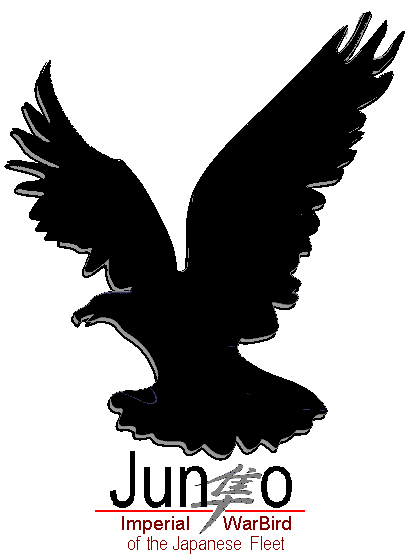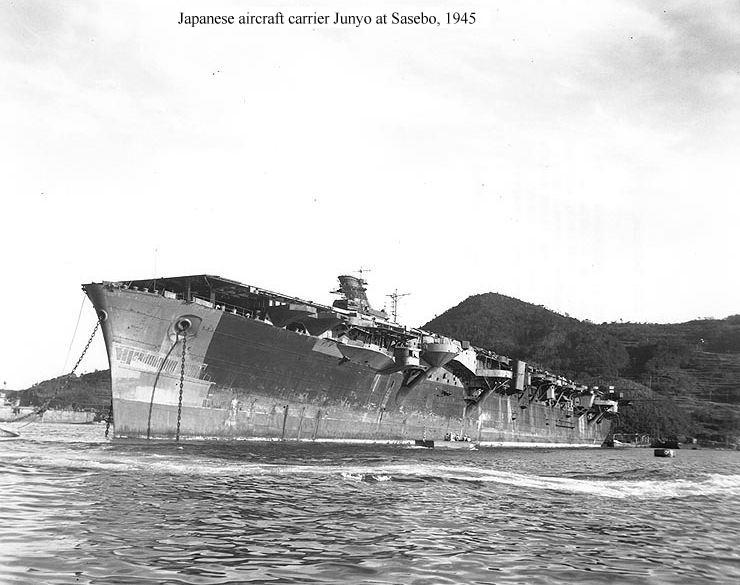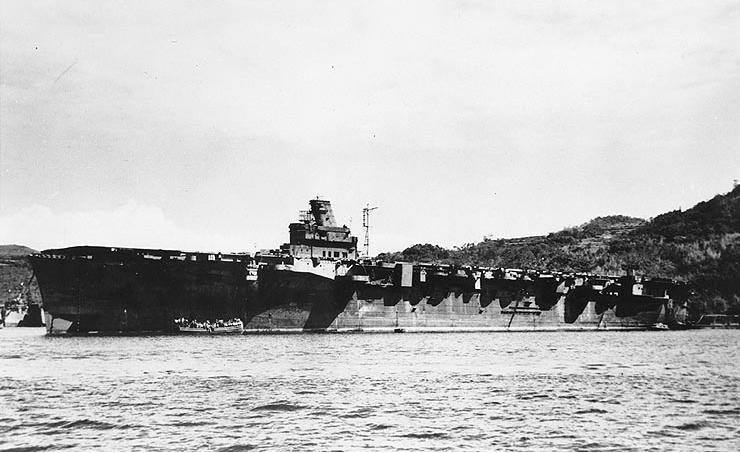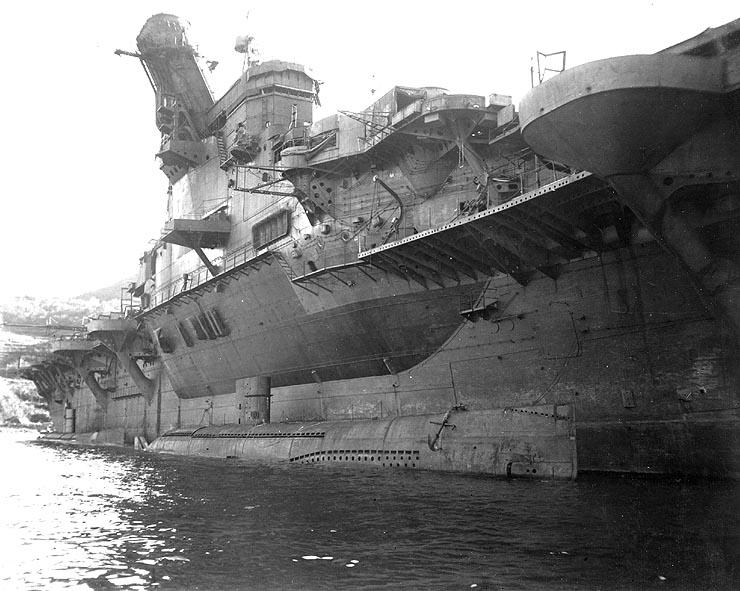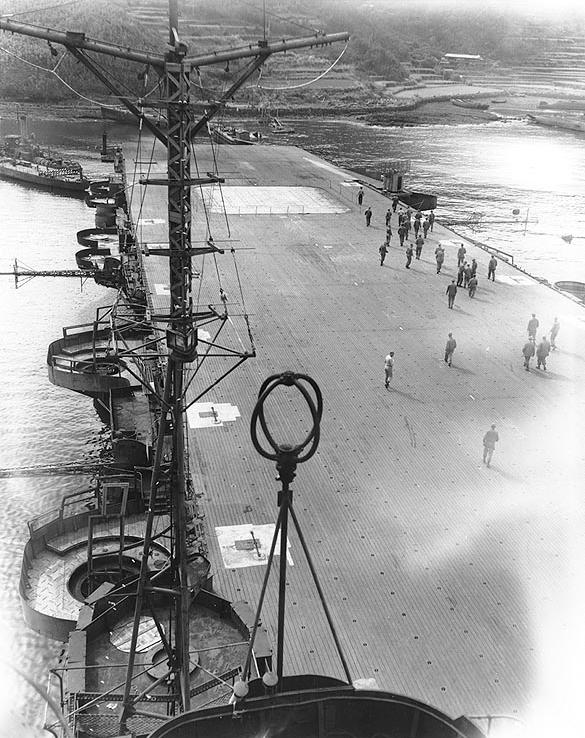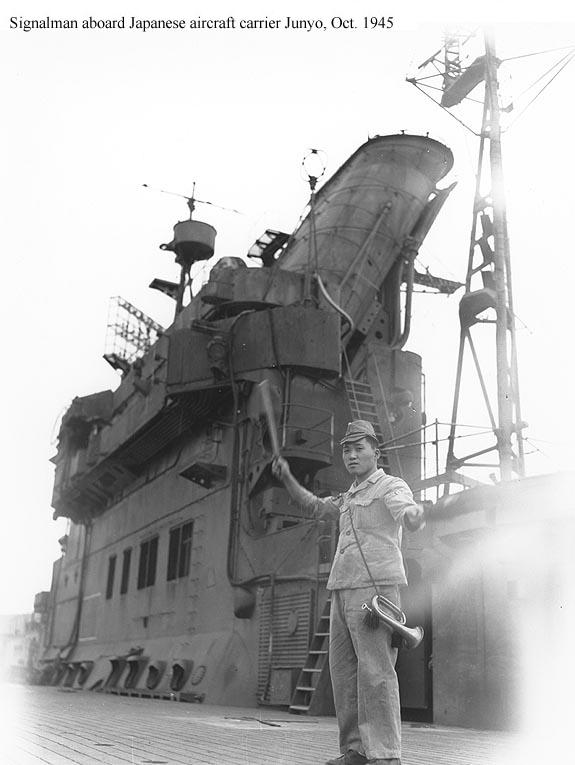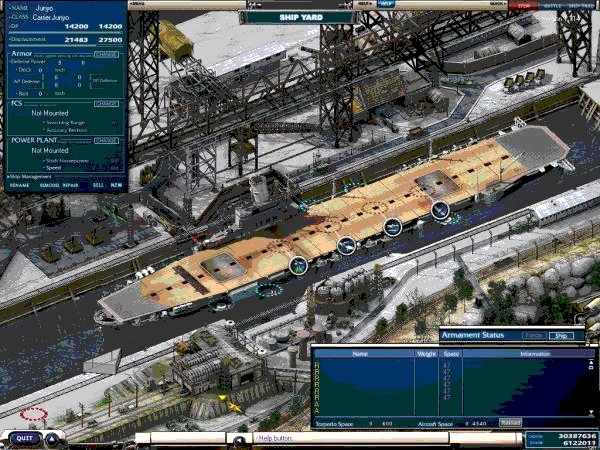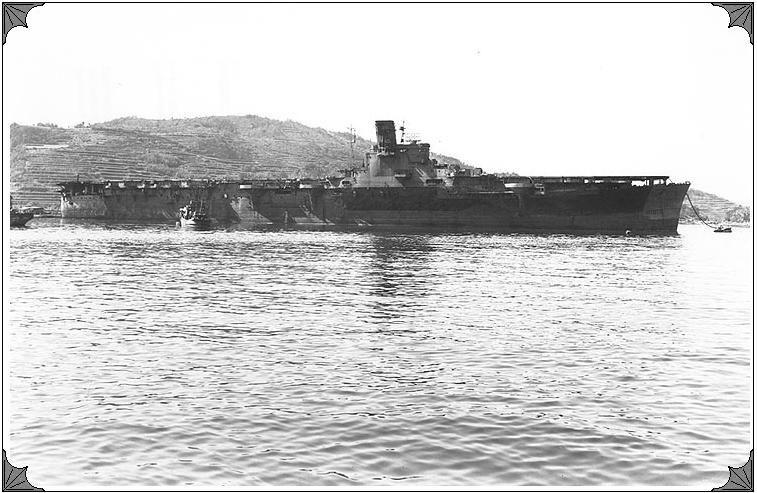
Imperial Japanese Navy - JUNYO Aircraft Carrier ==========================================================================
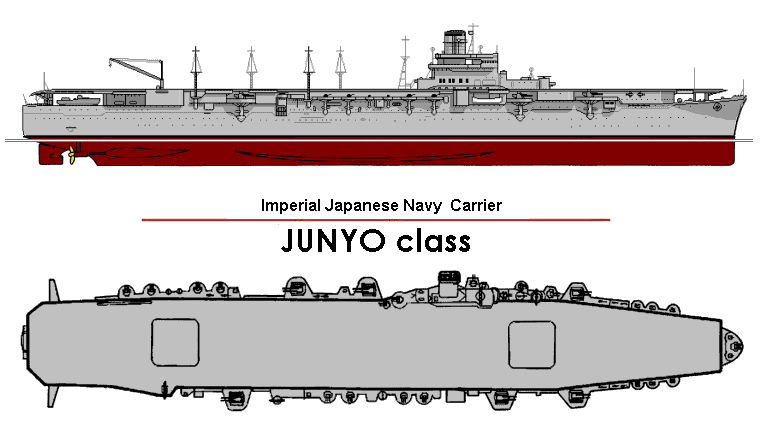
The Junyō ("peregrine falcon") was a Hiyō-class aircraft carrier of the Imperial Japanese Navy. She was laid down at Nagasaki as the fast luxury passenger liner Kashiwara Maru but was purchased along with her sistership by the Japanese Navy in 1940 and converted to an aircraft carrier. Her sister ship became the aircraft carrier Hiyō. Her bridge was built on the starboard side, and its funnel was slightly tilted to the outside in order to increase visibility on the flight deck.
Junyo, first of a class of two 24,100-ton aircraft carriers, was built by Mitsubishi at Nagasaki, Japan. She was begun as the civilian passenger liner Kashiwara Maru but was taken over by the Japanese Navy in 1940, while still on the shipways, and converted to a carrier. She was equipped with two aircraft hangars, two lifts, and was the first class of Japanese carriers to have the funnel incorporated into the structure of the island.
Completed in May 1942, early in June she participated in the attacks on U.S. Alaskan bases that accompanied the Battle of Midway. As one of four large aircraft carriers remaining after the Midway action, Junyo was an important unit of the Japanese fleet during the next two years, even though she had a lower speed and smaller air group than built-for-the-purpose fleet carriers. Smaller than the Shokaku-class carriers, she carried 53 planes (31 fewer than the Shokaku-class ships), displaced 28,300 tons fully loaded, and had a considerably slower maximum speed of 25.5 knots. Despite her slower speed, the 53 planes she carried still carried quite a punch. In late October 1942 during the fight over Guadalcanal, the Junyo was part of the Japanese fleet that fought the American Navy at the Battle of the Santa Cruz Islands. Her aircraft attacked the carrier Enterprise, battleship South Dakota, and the light cruiser San Juan and damaged the American battleship and cruiser. Her planes later covered the Japanese transports and warships during the Naval Battle of Guadalcanal in November. In the spring of 1943, her planes and other aircraft from the other Japanese carriers went to Rabaul for land-base air attacks on the gathering American power at Guadalcanal. The carrier protected a convoy carrying badly needed reinforcements in June 1943 for Japanese troops on Kiska in Aleutians.
While the Battle of Midway raged to the south, the Junyo was part of the operation to attack the American bases in the Aleutian Islands. In May 1942, she was assigned to support the invasion of the Aleutian Islands, a diversionary thrust in support of the attack on Midway. On 3 June 1942, along with Ryūjō, she launched airstrikes against Dutch Harbor on Unalaska Island. On 5 June she launched further strikes and was attacked by United States bombers but was not damaged.
Following the loss of four Japanese fleet carriers in the battle of Midway, Junyō was one of only four large carriers in the Japanese Navy (the others were Zuikaku, Shōkaku, and Hiyō ). This made Junyō an important ship, and great efforts were made to use her as a fleet carrier, even though she was slower and had a smaller air group than the purpose-built fleet carriers, Shōkaku and Zuikaku.
In late October 1942, during the Guadalcanal Campaign, Junyō took part in the Battle of the Santa Cruz Islands. On 26 October 1942 her planes attacked the carrier USS Enterprise, the battleship USS South Dakota and the light cruiser USS San Juan, scoring hits on the latter two.
On 5 November 1943 off Bungo Suido, Junyō was hit by a torpedo from the submarine USS Halibut. Four crew were killed and the steering damaged. Junyō was docked at Kure for repairs.
In May 1944, with Captain Shibuya Kiyomi in command, Junyō was assigned to Operation A-Go, a sortie to repulse the expected Allied invasion of the Mariana, Palau or Caroline Islands. In the resulting Battle of the Philippine Sea on 20 June 1944 Junyō was hit by two bombs at about 17:30. Her smokestack and mast were destroyed and her deck damaged. Her air operations were stopped, but she was able to withdraw without further damage,(unlike her sister ship Hiyō, sunk by torpedoes). However, most of her planes were lost in the Marianas “Turkey Shoot” such that she could not be part of Ozawa’s force at the Battle of Leyte Gulf.
After repairs at Kure, she was assigned to the Philippines but without planes she was unable to take part in the Battle of Leyte Gulf, being relegated to transport duties.
On 3 November 1944 she was attacked by the submarine USS Pintado near Makung but her escort destroyer Akikaze deliberately intercepted the torpedoes and sank with no survivors.
On 9 December 1944, Junyō was carrying 200 survivors of Musashi and was accompanied by the battleship Haruna and the destroyers Suzutsuki, Fuyutsuki, and Maki. The task force was attacked at midnight by the American submarines Sea Devil, and Redfish. Junyō was hit by three torpedoes, killing 19 men. Several compartments were flooded, giving her a 10°–12° list to starboard, but she was able to make way on one engine. Maki was also damaged by a torpedo. By 04:00 the Japanese task force entered shallow waters where the American submarines could not follow.
Junyō was drydocked at Kure, but repairs were abandoned in March 1945. Since Japan's strategic situation was now so bad as to eliminate any need for a carrier fleet, she was not repaired for seagoing service. The lack of materials, fuel and carrier planes meant that there was no need for fleet carriers. Junyō remained moored at Sasebo until the end of the war. At the end of the Pacific War, Junyo was moored at Sasebo, where she was scrapped in 1947 after servicing as a repatriation vessel. Her sister ship, the Hiyo, was sunk in the Battle of the Philippine Sea.

Junyō is sometimes referred to in World War II American sources as Hayataka (Hayabusa). This mistake derives from kun-yomi reading of the Kanji characters in the ship's name (which can also be read as hayataka), instead of on-yomi, passed to American interrogators by a Japanese prisoner of war after the Battle of Midway.
Junyō's ship's bell was recovered by the U.S. Navy near Saipan, having been separated from the ship by a bomb impact. The bell was given to Fordham University by Admiral Chester W. Nimitz in 1944, "As a Memorial to Our Dear Young Dead of World War II," according to the associated memorial plaque. It was blessed by Cardinal Spellman, the Roman Catholic Archdiocese of New York, and "[w]as first rung at Fordham by the President of the United States, the Honorable Harry S. Truman on May 11, 1946, the Charter Centenary of the University."
=================================================================================
NB: The above text has been collected / excerpted / edited / mangled / tangled / re-compiled / etc ... from the following online sources :
IJN - JUNYO class Aircraft Carriers - wikipedia article #1
IJN - JUNYO class Aircraft Carriers - wikipedia article #2
IJN - JUNYO class Aircraft Carriers - www.globalsecurity.org
IJN - JUNYO class Aircraft Carriers - www.battlesforguadalcanal.com
IJN - JUNYO class Aircraft Carriers - www.combinedfleet.com
